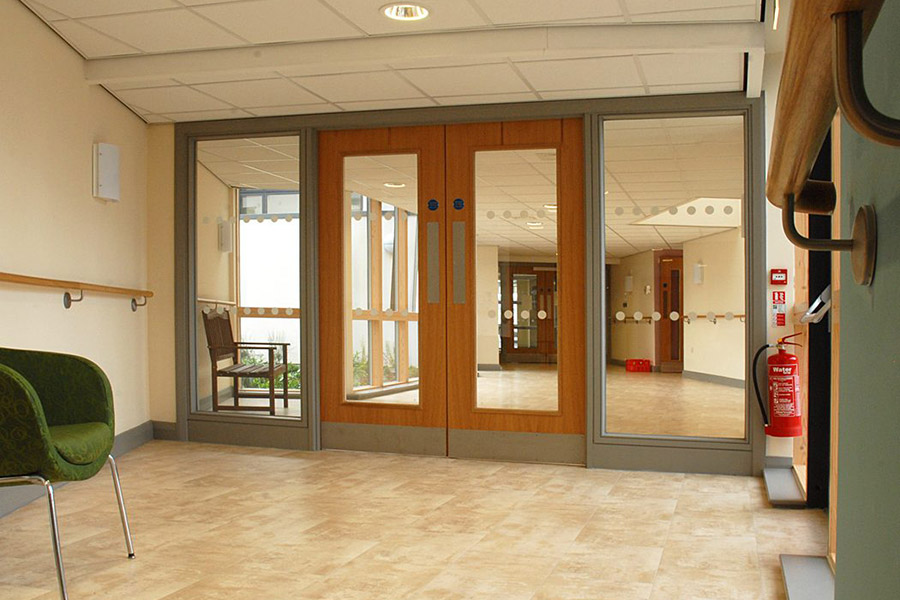Fire Door Safety Week: Why a system-based approach matters
To coincide with Fire Door Safety Week (which takes place 22-26 September), Steve Goodburn, Business Development Director at Pyroguard, discusses the importance of a system-based approach and the transition to EN fire door testing standards.

“Fire Door Safety Week provides a valuable opportunity to focus attention on fire doors, a crucial part of every building’s fire safety strategy. A fire door is a carefully designed system that prevents the spread of smoke and flame, protects escape routes, and when installed and used correctly, saves lives.
As the industry reflects on fire door safety and in light of the forthcoming move to European fire door testing standards in 2029, it is important to understand how fire doors function and how the upcoming testing standards will shape product selection.
How a system-based approach works
The performance of a fire door depends on the entire assembly, including the door leaf, frame, glazing, intumescent seal, hinges and locks. If one component fails, the reliability of the whole system is compromised. Therefore, fire door testing is always carried out on a complete door system to ensure all components perform and are compliant with current building fire safety regulations. Treating fire doors as tested systems, rather than individual parts, is fundamental to ensuring they perform as intended in the event of a fire.
Why the shift to European testing standards?
The shift to European fire door standards, BS EN 13501-2, represents a significant change in how fire doors are specified and approved. This move away from BS 476-22 testing standards is driven by the need for clarity in regulations since the Grenfell Tower tragedy. The EN standards provide a rigorous and harmonised framework, ensuring greater consistency in fire resistance classification.
The EN door test standard proscribes the use of different techniques for measuring temperatures during fire testing, specifically using shielded thermocouples instead of unshielded ones. These shielded sensors respond more slowly to temperature changes during the fire test, which can allow the actual furnace temperature to be significantly higher than what is recorded. As a result, the EN door test is somewhat more onerous than the BS test it will supersede.
For the industry, this change means re-testing products, updating technical documentation and meeting a more stringent certification process. While existing doors tested to BS standards can remain in place providing they are properly maintained and compliant with current regulations. Any new products brought to market after the transition will need to carry EN certification.
This means that architects and contractors should already be thinking about future-proofing their projects by specifying EN-tested door systems now, rather than waiting until 2029. Failure to do so could risk supply chain delays and additional costs further down the line, as manufacturers work to bring new systems through what is often a lengthy and resource-intensive testing process.
The role of fire safety glass
Fire safety glass is one of the most important aspects to consider when specifying and installing fire door systems. When specifying fire safety glass for fire doors, it’s essential to consider the specific performance requirements of the application, whether this is integrity only (E) or integrity with full insulation (EI).
At Pyroguard, we have stayed ahead of regulation changes, testing to the EN standard for many years to effectively future-proof our glass products. Our latest range of fire safety glass, Pyroguard Advance, incorporates new gel interlayer technology and is the only cuttable fire glass manufactured in the UK; it also offers integrity (E) with radiation reduction (W) as standard.
Pyroguard Advance is fully tested and certified to the latest European standards, supporting manufacturers and specifiers in meeting EN 1634-1 requirements. Providing EW (integrity and radiation) classifications of 30 or 60 minutes’ fire resistance, the range is designed to reduce the transmission of radiant heat to the protected side.
In addition, when incorporated within a double-glazed unit, Pyroguard Advance IGUs can offer enhanced protection against attack as required by building regulation Approved Document Q, and tested according to EN 356.
Future-proofing fire doors
The move to EN testing standards will provide greater consistency and strengthen compliance. This transition is a positive step forward, as it will raise expectations for fire door design, specification and installation, ensuring fire doors continue to play their important role in safeguarding buildings and people.”
For more information, please contact us.
